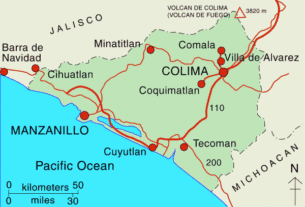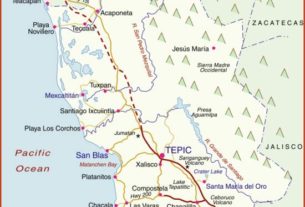The Mañana Principle- Mañana means tomorrow, right? Wrong! In Indian space-time, mañana can mean almost anytime … next week, next month … possibly never. However, it can be a most useful word once you disassociate yourself from American ideas of punctuality.
Mañana is a polite way of never saying “no” without having to say ‘yes”. When will the lawn be mowed? the car repaired? the shoes shined? Mañana, Señor … or, ofttimes, mañana por la mañana. Remember, in “mañana-land” everyone does things in their own good time… MAÑANA!
The Ahorita Principle – Ahorita is mañana in its diminutive form. It means just a tad sooner than mañana, and is the absolute smallest period of time in which ANYTHING can be done.
Ahorita is commonly used in traffic situations and generally accompanied by the ahorita sign. This sign is given with the left hand, holding about one inch of space between your thumb and forefinger. It tells the traffic behind you how long you intend to hold then up while you are unloading freight, passengers, or just chatting with your Tía María. Never mind that there is a wild tooting of impatient horns … the policía recognize your ahorita sign. So, if they can ahorita you, you can ahorita them.
Most newcomers to Baja California are introduced to Indian space-time through these two principles. It alerts them to the fact that the indigenous Indian people (as distinct from the Mexicans who have adopted western customs) live in a space-time different from their North American neighbors. Their time is more leisurely and they are totally unaware of clocks.
The notable exception to this is the bullfight. All bullfights start at 4:00 p.m. on the dot. It is considered bad luck to begin late. “If only we had the belief that starting to work late was bad luck,” laments one NAFTA Mexican entrepreneur.
This difference in time perception between the two cultures stems from a point of view. The GRINGO views time as being on a single line and always in one direction … a HORIZONTAL time … yesterday, today, and tomorrow. Whereas INDIAN TIME is completely different. It is vertical and unchanging, and the velocity concept boggles the gringos’ minds.
When asked, a Tarahumara Indian once said it would take an hour to walk to the next village. Then, after due consideration, “Two hours if you walk quickly enough.” Absolutely!
A more common way for the Indian to describe time is in conjunction with growth or change that is visible. The peon measures the distance from one village to another in terms of “a basket and a half” or “two baskets,” in relation to the time it takes to plait the straw as they walk.
Fifty-two Year Cycle: The Indian believes the past is not gone forever. It is still present somewhere, as it is in the result (THE BASKET) of the handwork done while walking. They are aware, however, that time, like everything else in the universe, is mortal. Fires must be lighted every fifty-two years to keep them going. Their fifty- two year time clock is cyclical and in the old days had to be wound-up” by prayers and fires.
At the end of the fifty-two year cycle, all fires were put out and wooden and stone statues of gods were thrown in the water along with pestles and hearth stones. Homes were swept clean and at midnight … when time had run out … the Aztecs would kindle a fire on the breast of a captive of noble birth. The captive’s heart fed the fire. If the blaze was not sufficient, Indians believed that the sun would be extinguished and devour them and that all men would be changed into beasts.
During this period women were kept in fear and locked in granaries. They wore masks of maguey leaves. Children also wore maguey masks and were kept awake by kicks and cuffs lest they drift into sleep and be turned into mice.
Everyone waited for the dawn, and when it finally came, they pricked their ears and sprinkled blood on the fire. From the temple fire, torches were lit and carried by runners to every home in the land. The people rejoiced at the promise of another fifty-two years of life; new garments were worn, homes were redecorated; new ritual vessels made and sacrifices of quail and incense offered. Seed cakes of amaranth were eaten with honey and no-one drank between daybreak and noon. At noon, captives were ceremoniously bathed and then sacrificed. Grains of maize (corn) were cooked on the fires and distributed to all the people to eat.
The Cross and the Pyramid: The symbol of the cross was known to the ancient Indian. They believed that the horizontal arm signified the “changing” and the “perishable”, and that the vertical one was eternal and stable, representing time in various heavens and underworlds.
The horizontal arm was associated with the passage of the sun across the sky.
Mexican architectural monuments are expressions of eternally recurring space-time. The Aztecs built one pyramid on top of another every fifty-two years. The planning of great courtyards and palaces and the solid base of pyramids are examples of massive horizontal planning. They frequently rise to peaks but their bases are firmly set on the ground, that they might endure forever.
Useful Space-Time: The Indian attitude to time shows in doctrines of free will and predestination. Immortality could be of different grades. A man might pass to paradise … the “Land of Water and Mist” that closely resembled conditions on earth. Or, he might transcend the body and continue to the “Land of Paradise” and thence to full immortality in the “House of the Sun”. – This was a gradual progression from relative darkness to purest light…from earthbound satisfaction to spiritual joy.
So just remember what a convenient and useful space-time you can have operating south of the border … AND IF THEY “MAÑANA” YOU, YOU CAN “MAÑANA” RIGHT BACK.
This article originally appeared in “Mexico Living and Travel Update”, Summer 1994,
and is presented here with their kind permission.


